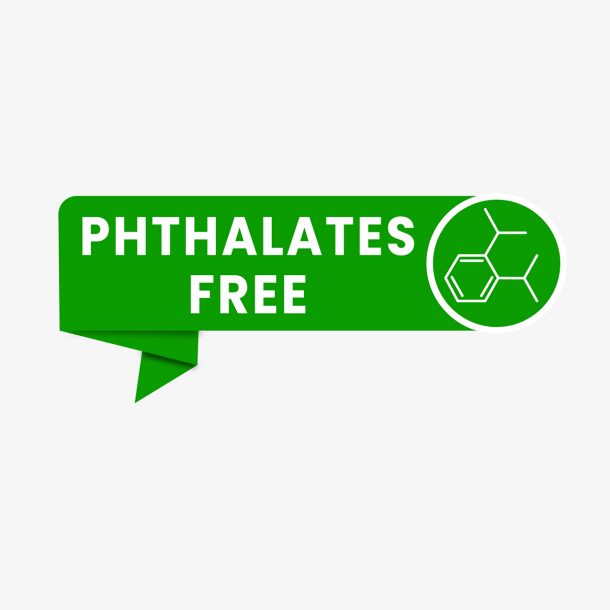-
Schaden & Unfall
Schaden & Unfall ÜberblickRückversicherungslösungenTrending Topic

Schaden & Unfall
Wir bieten eine umfassende Palette von Rückversicherungslösungen verbunden mit der Expertise eines kompetenten Underwritingteams.
-
Leben & Kranken
Leben & Kranken ÜberblickUnsere AngeboteUnderwritingTraining & Events

Leben & Kranken
Wir bieten eine umfassende Palette von Rückversicherungsprodukten und das Fachwissen unseres qualifizierten Rückversicherungsteams.
-
Unsere Expertise
Unsere Expertise ÜberblickUnsere Expertise

Knowledge Center
Unser globales Expertenteam teilt hier sein Wissen zu aktuellen Themen der Versicherungsbranche.
-
Über uns
Über uns ÜberblickCorporate InformationESG bei der Gen Re

Über uns
Die Gen Re unterstützt Versicherungsunternehmen mit maßgeschneiderten Rückversicherungslösungen in den Bereichen Leben & Kranken und Schaden & Unfall.
- Careers Careers
Phthalates – Why Now and Should We Be Worried?

30. Oktober 2024
Allison Harmony,
Kent Willis
English
Have you ever wondered how plastics are made and how they retain their shape? Precursors to plastics were discovered almost two hundred years ago but were brittle and flammable. Over time different additives were introduced to give them stability, flexibility, and ensure they could stand up to heat. One of those additives is phthalates, a family of colorless, odorless synthetic compounds.
Phthalates, referred to as “plasticizers,” have been applied to polyvinyl chloride (PVC) since 1926, but can also be found in various healthcare products, adhesives, paints, rubber materials, flooring, food contact materials, medical devices, and sports equipment, to name just a few.1
Phthalates do not chemically bind to the materials they are added to, so they can leach out or evaporate over time.
Humans can be exposed to phthalates in many ways. One primary way is through diet. Chemicals can leach into food from vinyl plastic equipment and materials, food preparation gloves, and food packaging. Another exposure avenue is migration through indoor air and household dust from products such as vinyl flooring and wall coverings. Personal care products create additional pathways of exposure: Phthalates can be found in cosmetics, shampoo, skin moisturizers, and other personal care products.
Exposure Studies
Phthalates have been classified as endocrine disruptors (EDs). EDs are chemicals that can interfere with, block, or mimic the body’s hormones. Studies show maternal exposure during pregnancy can impair child brain development and increase children’s risks for learning, attention, and behavioral disorders.2
Additional studies have shown an adverse intrauterine environment has a profound negative influence on the future of an infant by increasing the risk of developing diseases such as obesity, asthma, allergies, cardiovascular disease, and cancer later in life.3 EDs disrupt sex hormone production, mimic the female hormone estrogen, and disrupt the production of testosterone.4
Regulations
This exposure, and the potential for injury, has caught the attention of regulators and government officials around the world:
- In 1999, the EU temporarily banned six phthalates from children’s toys.5
- In 2007, the EU ban was made permanent and expanded to include childcare products that small children could put in their mouths.6
- In 2003 the U.S. Centers for Disease Control documented widespread exposure to phthalates but recommended further studies.7
- In 2008, a legislative bill known as HR 4040, sponsored by Congressman Bobby Rush (D‑Ill.), was signed into law by President Bush.8 The law was in response to the EU’s ban and became known as the Consumer Product Safety Improvement Act (CPSIA). The CPSIA banned the use of three phthalates in toys and childcare products at concentrations above 0.1% and restricted the use of other phthalates in toys that can be mouthed.
- In 2022, the FDA amended its food additive regulations to revoke authorizations for 25 phthalates and other substances used in food contact applications.9
Regulations to date seem to focus on protecting the most vulnerable: children. However, as mentioned above, phthalates are used in many products, including consumer healthcare products.
Why are phthalates suddenly an emerging issue?
Almost certainly because of study results published by the National Institutes of Health (NIH) on October 17, 2022, phthalates have caused increased concerns. The NIH concluded that women who used chemical hair straightening products were at a significantly higher risk for uterine cancer compared to women who did not. The researchers found women who used the products more than four times in a year, were 50% more likely to go on to develop uterine cancer. The NIH went on to estimate that 1.64% of women who never used hair straightener products would develop uterine cancer by the age of 70, but for frequent users of the hair straightening products, that risk goes up to 4.05%. While this dramatic risk increase is certainly troubling, overall incidents of uterine cancer remain relatively rare.10
Litigation
That rarity did not stop the plaintiffs’ bar from immediately seizing onto the results of this report. One of the first plaintiff’s suits, Jenny Mitchell vs. L’Oréal (the manufacturer of the “Dark and Lovely” line of products) was filed in the United States District Court for the Northern District of Illinois on October 21, 2022, a scant four days after NIH’s report was published.11 A petition for certification of a class action/multi-district litigation followed only three weeks later, at which point there were already 13 other actions filed in various federal district courts.12 The number of defendant manufacturers was likewise increased to now include Revlon, L’Oréal, Luster Products, Inc., Avon Industries, House of Cheatham, Namaste Laboratories LLC: Strength of Nature LLC, Sally Beauty Supply and McBride Research Laboratories. The causes of action include negligence, strict liability for design defects, failure to warn, breach of warranty, unjust enrichment, and wrongful death.
The class was certified on February 6, 2023, by which time there were over 40 cases pending in at least 14 judicial districts throughout the U.S.13 The number of plaintiffs increased exponentially, reaching 8,000 over the next 12 months, then slowed markedly with the current total after two years standing at approximately 8,500. This is attributable in part to the relatively limited total incidents of linked cancers as well as some cases being filed in state courts, primarily Cook County, Illinois, and Chatham County, Georgia.14 As with many multi-district litigations (MDLs), for efficiency certain bellwether (representative) cases will be argued to conclusion, and based on those results a framework for resolving the large number of remaining ones will then be fashioned.
Plaintiffs with the strongest cases – those with the most severe injuries, treatments, and resultant impacts – will likely receive the largest compensation. Plaintiffs with less compelling fact patterns are likely to receive less, and those unable to meet the administrator’s evidentiary thresholds may not qualify for any compensation.
After a relatively fast start, the process has slowed; as of August 2024, no hair relaxer case, individual or bellwether, state or federal, has been argued substantively and no damages have been awarded by a jury. Document discovery is in the early stages, with tens of millions of total pages being sought by Plaintiffs and the actual production and review only just getting underway.
A special master for electronic discovery was appointed in June 2024 to assist in this process. No bellwether cases have been proposed by either side, let alone agreed to. Once that occurs, targeted discovery, expert retention and reports, depositions of parties and experts, and a myriad of motions, briefings and hearings will likely follow, after which the actual trials will take place. A realistic timeline for the process indicates at least 2026 for this discovery to be completed, barring any settlement(s) in the interim.
The funding of any potential settlements would come from either the individual defendant’s coffers or their responsive insurance coverages. L’Oréal, for example, is understood to have assets of over $50 billion as well as insurance coverage. Revlon entered bankruptcy reorganization in 2023 but appears to retain significant insurance coverage, as do the balance of the defendant manufacturers.
Insurance Coverage?
Any potential insurance support would be subject to the limits, terms, and conditions of the respective policies and controlling state and federal law.
The coverage issues could potentially include the following:
Trigger
Which policies would respond?
Allocation
Which policies can be accessed, to what degree, and in what order?
Erosion of coverage “towers”
How would uncollectable insurance or gaps in coverage work?
Application of policy limits
Per claimant? Per product line? Each occurrence or single aggregate?
Expected or intended loss
What did the insured know and when? Was the loss fortuitous?
Pollution exclusion
Would it apply to these chemicals and injuries?
These questions, and others, might eventually need to be resolved by a separate coverage action seeking a declaratory judgment of the rights and duties of the defendant insureds and their respective insurers.
Phthalates and the issues surrounding them present another evolving issue with which our highly industrialized society finds itself grappling, and responses continue to evolve. California, for example, is banning the use of 12 of these chemicals (also including PFAS) in most cosmetics effective January 1, 2025, with 27 more chemical ingredients joining the list in 2027.15
As these matters unfold, Gen Re will continue to stay abreast of notable developments and responses. Should you have any questions or comments on this subject, please reach out to us directly or your Gen Re underwriter; we are more than happy to be of assistance.
- Jörg Oehlmann et al., “A critical analysis of the biological impacts of plasticizers on wildlife”, Philosophical Transactions of the Royal Society London B Biological Sciences, 364(1526):2047‑62, 27 Jul. 2009, https://pmc.ncbi.nlm.nih.gov/articles/PMC2873012.
- Stephanie M. Engel et al., Prenatal Phthalates, Maternal Thyroid Function, and Risk of Attention-Deficit Hyperactivity Disorder in the Norwegian Mother and Child Cohort”, Environmental Health Perspectives, v126(5), 10 May 2018, https://ehp.niehs.nih.gov/doi/10.1289/EHP2358; Stephanie M. Engel et al., “Neurotoxicity of Ortho-Phthalates: Recommendations for Critical Policy Reforms to Protect Brain Development in Children”, American Journal of Public Health, 10 Mar. 2021, https://ajph.aphapublications.org/doi/full/10.2105/AJPH.2020.306014.
- Maria Elisabeth Street, Sergio Bernasconi, “Endocrine-Disrupting Chemicals in Human Fetal Growth”, International Journal of Molecular Sciences, 21(4):1430, 2020, https://www.mdpi.com/1422-0067/21/4/1430; D.J. Barker, C. Osmond, C.M. Law, “The intrauterine and early postnatal origins of cardiovascular disease and chronic bronchitis”, Journal of Epidemiol Community Health, 43(3):237‑40, Sep. 1989, https://pmc.ncbi.nlm.nih.gov/articles/PMC1052843.
- Alessandro Rolfo et al., “Fetal–Maternal Exposure to Endocrine Disruptors: Correlation with Diet Intake and Pregnancy Outcomes”, Nutrients, 12(6), 11 Jun. 2020, https://www.ncbi.nlm.nih.gov/pmc/articles/PMC7353272.
- “Phthalates”, European Chemicals Agency (ECHA), https://echa.europa.eu/hot-topics/phthalates.
- Ibid.
- Dana B. Barr, “Assessing human exposure to phthalates using monoesters and their oxidized metabolites as biomarkers”, Environmental Health Perspectives, v111(9):1148‑1151, 1 Jul. 2003, https://ehp.niehs.nih.gov/doi/abs/10.1289/ehp.6074.
- Consumer Product Safety Improvement Act of 2008, Pub. L. No. 110‑314, https://www.congress.gov/bill/110th-congress/house-bill/4040/text.
- “Phthalates in Food Packaging and Food Contact Applications”, U.S. Food and Drug Administration, 21 Jul. 2023, https://www.fda.gov/food/food-additives-and-gras-ingredients-information-consumers/phthalates-food-packaging-and-food-contact-applications.
- “Hair straightening chemicals associated with higher uterine cancer risk”, National Institutes of Health, 17 Oct. 2022, https://www.nih.gov/news-events/news-releases/hair-straightening-chemicals-associated-higher-uterine-cancer-risk.
- Jenny Mitchell v. L’Oréal, 1:22‑cv‑05815 (United States District Court for the Northern District of Illinois, 2022), https://www.classaction.org/media/mitchell-v-loreal-usa-inc-et-al.pdf.
- Motion to Transfer Hair Relaxer Lawsuits and Consolidate an MDL, Case Pending No. 115: Document 1‑1, (Judicial Panel on Multidistrict Litigation, Washington, DC, 15 Nov. 2022), https://nighgoldenberg.com/wp-content/uploads/2023/07/Motion-to-Transfer-Hair-Relaxer-Lawsuits.pdf.
- Re: Hair Relaxer Marketing Sales Practices and Products Liability Litigation, 1:23‑cv‑00818, (United States District Court for the Northern District of Illinois, 6 Feb. 2023), https://www.jpml.uscourts.gov/sites/jpml/files/MDL-3060-Transfer_Order-1-23.pdf.
- Joint Status Report Re: Hair Relaxer Marketing Sales Practices and Products Liability Litigation, 1:23‑cv‑00818, (United Stated District Court for the Northern District of Illinois), 22 Aug. 2024, https://www.aboutlawsuits.com/wp-content/uploads/2024-08-22-Report.pdf.
- California Assembly Bill #496, https://leginfo.legislature.ca.gov/faces/billTextClient.xhtml?bill_id=202320240AB496.
General Background: Miller & Zois LLC, Nigh Goldenberg Raso & Vaughn


